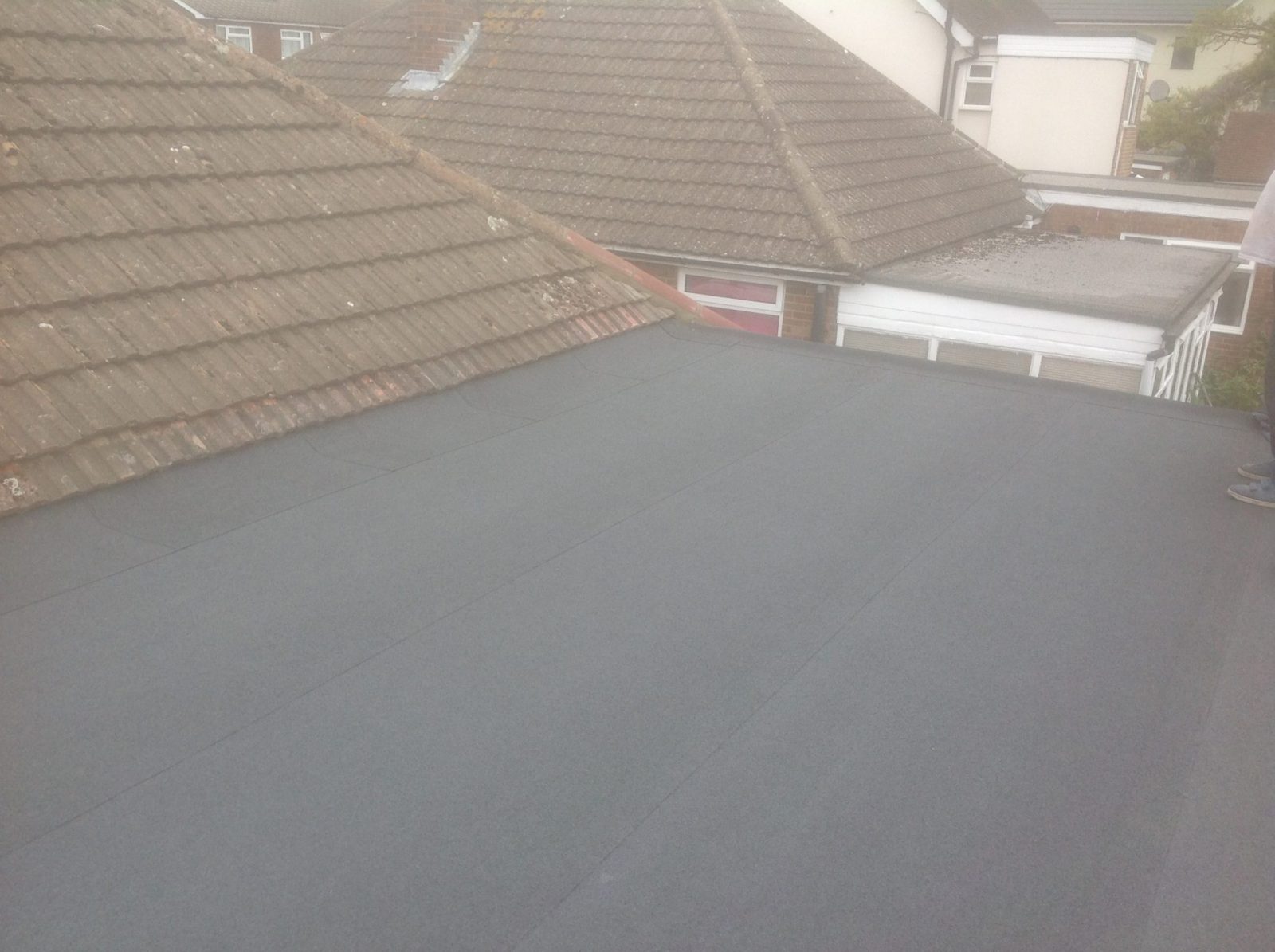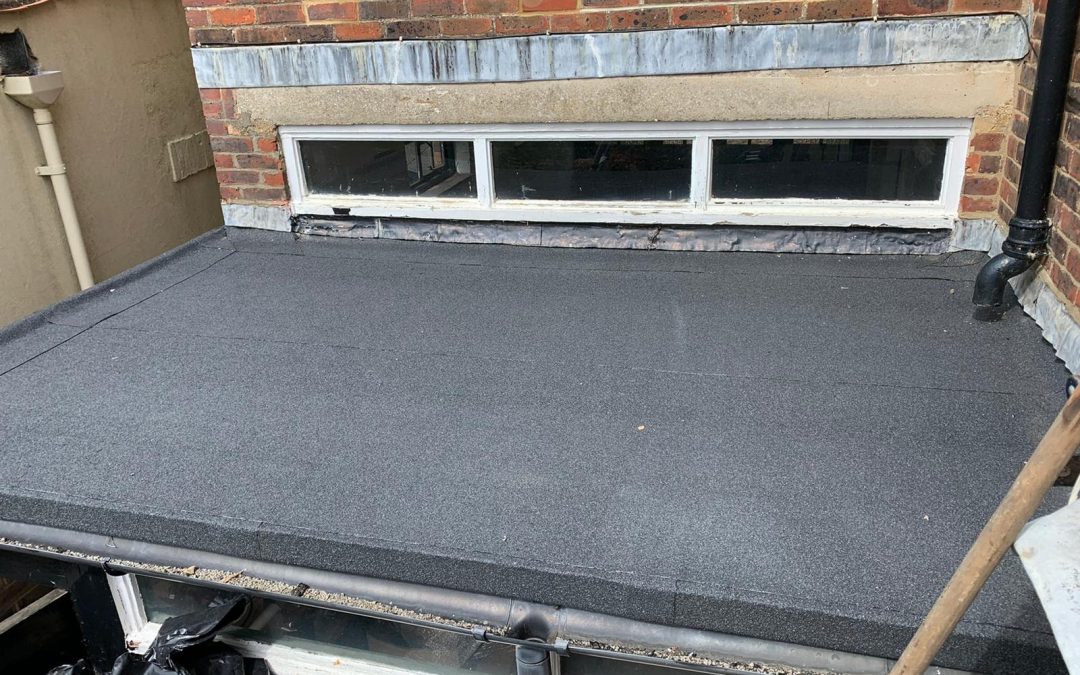Flat roofs are a popular choice for extensions, garages, and modern homes across the UK, but they do come with their own unique set of challenges. If you’re facing problems with ponding water, blistering, or a leaking flat roof, it’s essential to act fast. In this step-by-step guide, we’ll walk you through how to repair a flat roof, what causes common flat roof problems, and when it’s best to call in the professionals.
Why Flat Roofs Require Special Attention
Unlike pitched roofs that shed water naturally, flat roofs rely heavily on high-quality waterproofing and perfect installation. Any small imperfection can allow water to sit, seep, and slowly damage the surface over time. That’s why repairing flat roofs requires a careful, considered approach with the right tools, timing, and materials.
The good news? Many flat roof issues can be repaired effectively if caught early, and in some cases, you can carry out basic repairs yourself. Whether you’re wondering how to repair a flat roof yourself or you’re just looking to understand the process, this guide will give you the insight you need.
Common Issues with Flat Roofs and Their Causes
Flat roofs are exposed to the full brunt of the weather, and over time, even the toughest materials begin to show signs of wear. Some of the most frequent issues include:
Water collecting in pools or shallow dips is one of the biggest causes of flat roofing repairs. Ponding accelerates material breakdown, especially in traditional felt roofs. If left untreated, this standing water can eventually seep through the roof membrane, causing internal leaks.
Cracks, Splits, and Blisters
Temperature changes and UV rays can cause the flat roofing surface to expand and contract, leading to cracking and blistering. These weak spots are prone to leaks and are a key reason for emergency flat roof repair requests during storms.
Flat roof felt repair is a common maintenance issue. Tears or holes in the felt, often caused by foot traffic or sharp debris, can allow water to penetrate through the layers. Quick patching can prevent the issue from worsening.
Flashing forms a seal around joints and edges, particularly near walls or skylights. When it becomes loose or deteriorates, water can creep in around the edges, leading to leaks that are hard to trace without proper inspection.
How to Identify Flat Roof Problems Early
Spotting issues early can save you from major repair bills. Keep an eye out for watermarks on ceilings, mould or mildew inside your property, and visible sagging or pooling on the roof surface. Regular inspections in spring and autumn, or after a storm, can help you catch these signs before they turn into larger problems.
Essential Tools and Materials for Flat Roof Repair
To repair flat roof surfaces effectively, you’ll need the right tools. This may include roofing tape, patch repair kits, liquid waterproofing compounds, a roller or brush, roofing cement, and a utility knife. For larger repairs, EPDM rubber membrane patches or felt overlays may be required.
Knowing the best flat roof repair material for your type of roof – whether that’s felt, EPDM, GRP or bitumen – makes a big difference in durability and success.
Securing and Sealing Flashing
Loose flashing should be re-secured using waterproof roofing cement and sealed along the edges to prevent further leaks. Pay attention to corners, roof abutments, and edges where water tends to gather. Many flat roof leaking repair issues are caused by failed flashing, so it’s an essential part of any repair job.
DIY Flat Roof Repairs: Pros, Cons, and Safety Tips
If you’re confident working at height and your flat roof leak is minor, DIY may be suitable. For example, applying a patch to a tear or resealing a small blister. Always clean the area first, allow it to dry fully, and use suitable flat roof repair methods for your specific roof type.
However, there are risks. Improper application of materials, incorrect diagnosis of the issue, or poor adhesion due to moisture can all lead to further damage. If you’re unsure, it’s best to consult a roof leak repair company for guidance.
Emergency Flat Roof Repairs: Immediate Actions to Take
In the event of a sudden leak during bad weather, quick temporary action can save your home from major water damage. Use a waterproof tarp to cover the affected area, and apply temporary roofing tape or sealant if safe to do so. Emergency flat roof repair buys time until a full repair can be carried out under dry conditions.
When to Hire a Professional for Flat Roof Repairs
While some issues can be tackled DIY, more complex damage requires experienced roof leak repair contractors. If your flat roof has widespread blistering, major leaks, or signs of structural movement, it’s vital to get professional help. A reputable roofer will identify the root cause and ensure a long-lasting solution.
Professionals can also recommend the best flat roof repair material for your property and carry out repairs under safe, controlled conditions.
Tips for Extending the Lifespan of Your Flat Roof
Prevention is better than cure. To reduce the need for repeated flat roofs repairs, follow these steps:
- Schedule twice-yearly roof inspections.
- Remove debris such as leaves or branches.
- Clear blocked gutters and downpipes.
- Re-coat with waterproofing every few years.
These proactive measures help reduce the average cost of flat roof repair over time and maintain roof integrity.
Don’t Let Flat Roof Problems Catch You Off Guard
Whether you’re wondering how to repair a flat roof leak, fix ponding water, or carry out a quick emergency fix, knowing the common signs and solutions is your first defence. With the right materials and approach, even persistent flat roof issues can be handled efficiently.
Remember, quick action is the key to minimising water damage and reducing the cost of flat roof repair in the long run. If in doubt, always call on trusted professionals for reliable, lasting results.
What are the most common problems with flat roofs?
Flat roofs frequently experience issues like ponding water, leaks, cracking, blistering, and deterioration of roofing felt or membranes.
Can I fix a flat roof leak myself, or do I need a professional?
You can address minor leaks yourself using roof repair kits or waterproof sealants. However, significant leaks or structural issues should be repaired professionally.
What's the best material for repairing a flat roof leak?
High-quality waterproof sealants, liquid rubber coatings, EPDM membranes, and reinforced roofing patches are effective solutions for flat roof leak repairs.
How long will a flat roof repair last?
A properly completed flat roof repair typically lasts 3–10 years or more, depending on the repair method, materials used, and overall roof condition.
Can flat roofs be repaired when wet, or should I wait for dry weather?
It’s essential to wait for dry conditions when repairing a flat roof to ensure the patch or coating adheres correctly and prevents future leaks.
How often should I inspect my flat roof for damage?
Inspect your flat roof at least twice per year, preferably during spring and autumn, and after significant storms or heavy weather conditions.


